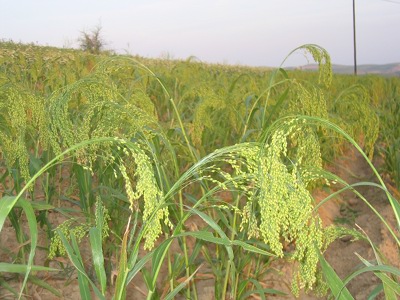The East-West Millet Project
Project background
By 7,000 years ago, one particular crop species, broomcorn millet (Panicum miliaceum) has been recorded from archaeological sites as far afield as Central Europe and Northern China, across a distance of over 7000 kilometres., There would be nothing unusual about such a spread of records three millennia later: from the 3rd millennium BC several crops were moving long distances, both within and between continents, as part of a wider picture of extensive human movement and exchange.
The case of Panicum however is unusual, and could conceivably indicate human contacts and movements across Asia at a very early date. There are alternative potential explanations of the evidence, for example a multiple domestication, and further research is required to elucidate the history of this intriguing crop. The East West Millet Project, led by Prof Martin Jones, aims to undertake that research, through archaeobotanical, genetic, and isotopic means, in the context of parallel studies by associated projects on material culture, absolute chronology, and ethnography.
Project strands:
- Genetics
- Archaeobotanical fieldwork in Ukraine
- Archaeobotanical fieldwork and stable isotopic analysis in North China

Project team members Xinyi Liu, Giedre Motuzaite-Matuzeviciute, Dustin White and Martin Jones in northern China

Millet field at dusk, North China

Millet threshing

Charred millet grains

Millet farming landscapes, Inner Mongolia, China





